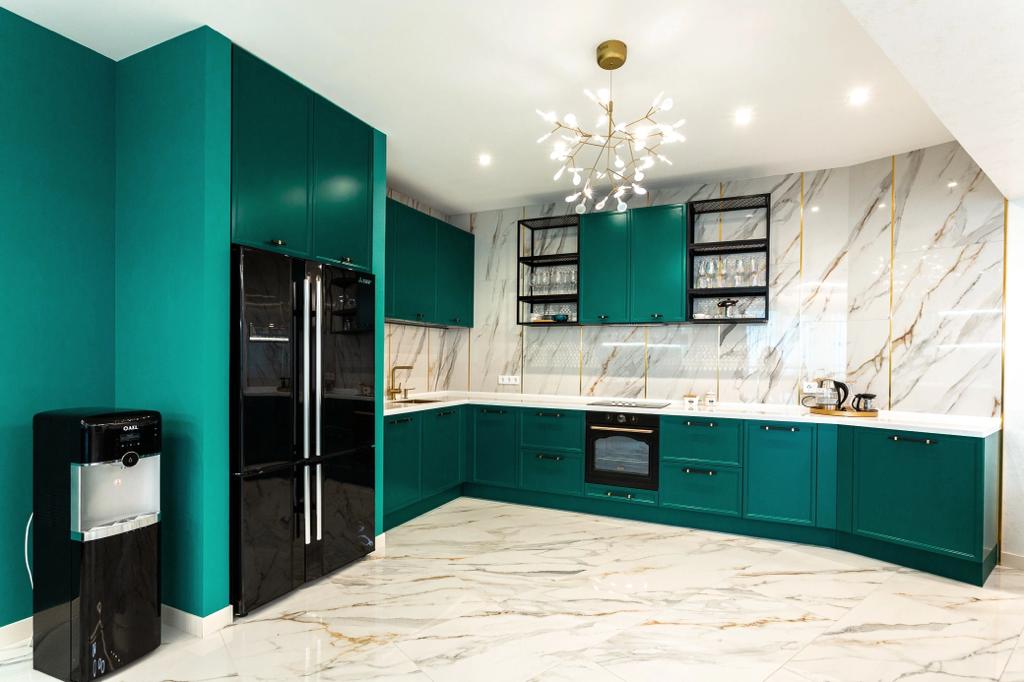
Introduction to Transformative Kitchen Design
Designing a kitchen that not only reflects personal style but also enhances functionality is key to transforming any home's culinary space. A well-thought-out kitchen design can inspire newfound love for cooking, improve efficiency, and increase the overall value of your home. In this article, we'll explore essential components that play a pivotal role in achieving a transformative kitchen design.
Maximizing Layout Efficiency
The layout of a kitchen is the foundation upon which its functionality is built. While the classic work triangle, connecting the refrigerator, stove, and sink, remains a starting point, modern kitchen designs also consider zones for prepping, cooking, cleaning, and storage. An efficient layout promotes a seamless workflow, reducing the time and effort spent moving around the kitchen. Consideration of the space available, whether large or small, can lead to ingenious design solutions that maximize every inch.
Smart Storage Solutions
Storage is the cornerstone of a clutter-free kitchen. Transformative design incorporates innovative storage options like deep drawers for pots and pans, pull-out cabinets for spices, and vertical dividers for trays and cutting boards. Customizable pantry systems and corner cabinet pull-outs can significantly enhance storage capacity, making the kitchen more orderly and accessible.
Durable and Aesthetic Materials
The choice of materials can enormously impact both the look and longevity of your kitchen. High-traffic areas require durable materials that can withstand wear and tear. Countertops could be quartz or granite for their durability and elegance, while backsplashes could feature ceramic tiles or glass for easy cleaning and a modern look. Floors should be chosen not only for aesthetics but also for comfort and ease of maintenance, with options like porcelain tiles or high-end vinyl offering a good balance.
Lighting That Makes a Difference
Lighting is an often overlooked aspect that is crucial in kitchen design. A combination of general illumination, task lighting, and accent lighting will not only enhance the kitchen’s functionality but also elevate its aesthetic appeal. Under-cabinet lighting, pendant lights over the island, and recessed ceiling fixtures are elements that, when layered properly, bring warmth and dimension to the space.
Technological Integration
Modern kitchens embrace technology for improved convenience. Smart appliances with Wi-Fi capabilities allow for remote monitoring and control, while USB ports and charging stations integrated into the design keep devices powered up. Features like hands-free faucets, programmable ovens, and advanced refrigeration systems can transform daily kitchen activities into a seamless experience.
Ergonomics and Accessibility
A transformative kitchen design is also an inclusive one. Ergonomics plays a vital role in creating a comfortable and safe kitchen environment for all users. Adjustable heights for counters and pull-out shelves can cater to diverse needs, making the kitchen more user-friendly. Innovation in hardware has also led to soft-close cabinet doors and drawers, which not only reduce noise but also minimize the strain on joints.
Conclusion: Harmonizing Style with Function
A transformative kitchen design merges style with function to create a space that is as beautiful as it is practical. By carefully planning the layout, selecting the right materials, considering ergonomics, integrating technology, and getting the lighting right, you can create a kitchen that will serve as a heartwarming gathering place and an efficient area for culinary adventures. Ultimately, the key to a successful kitchen design is in its ability to adapt to the evolving needs and styles of its users, while maintaining its essential character as a welcoming and productive space.